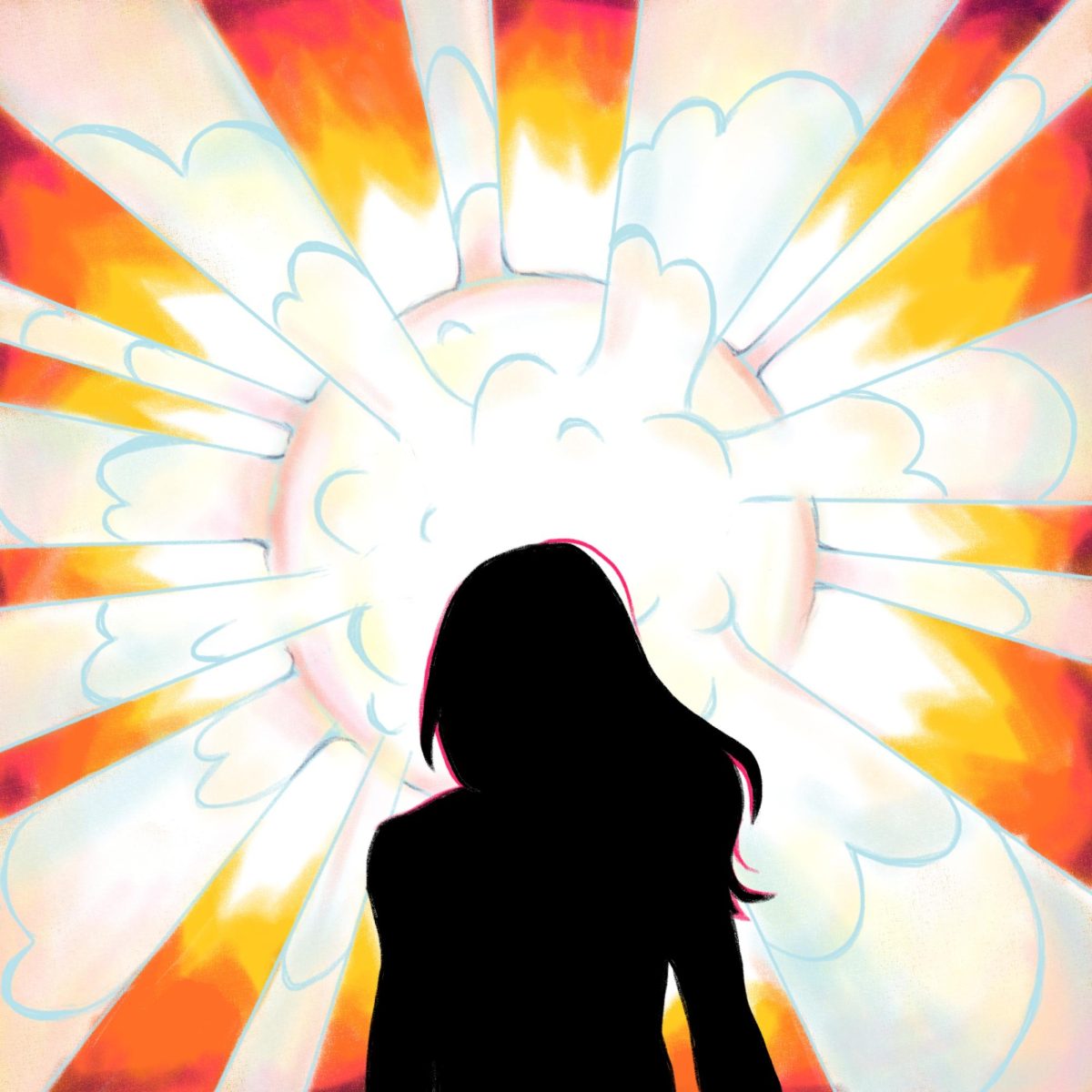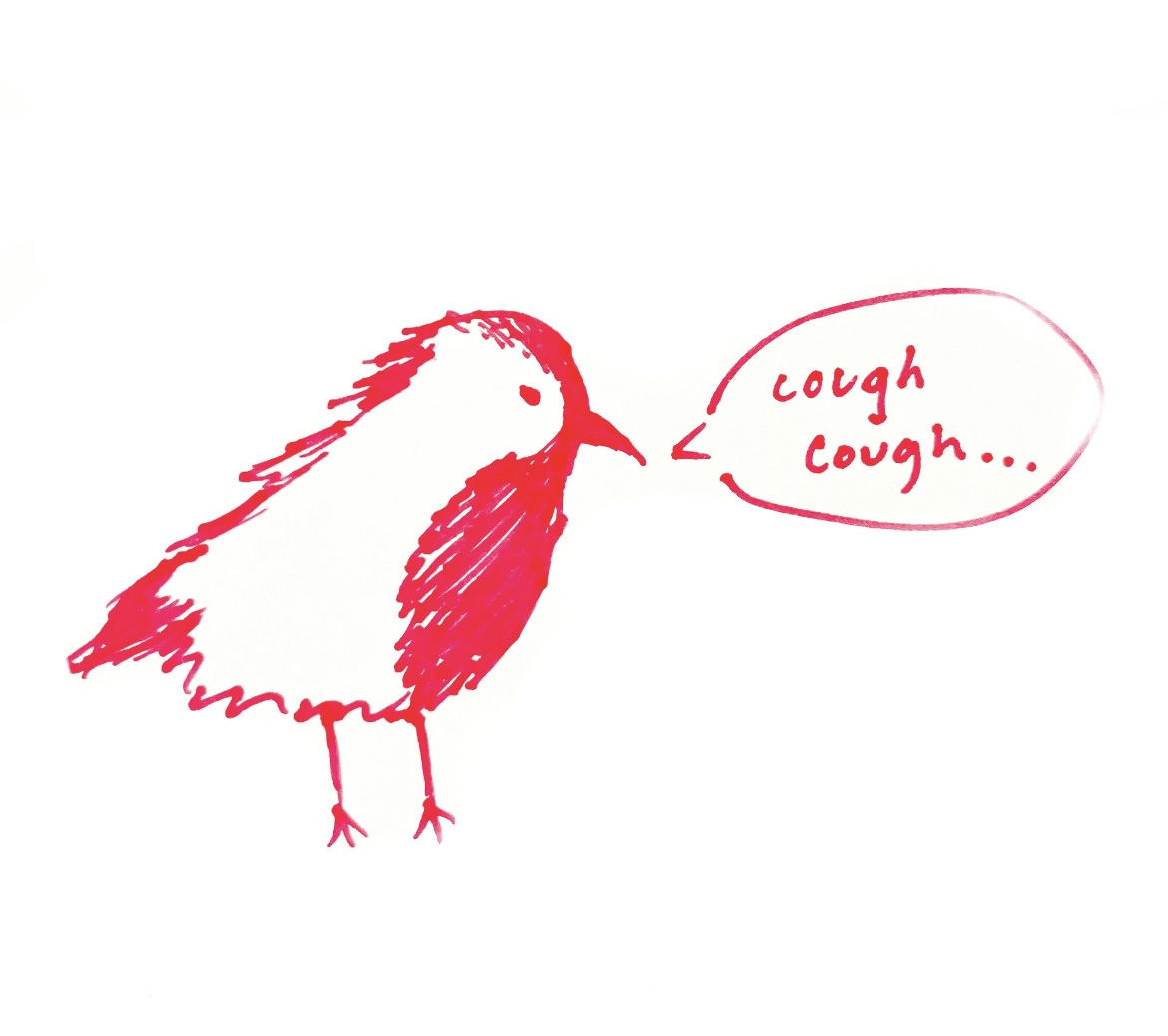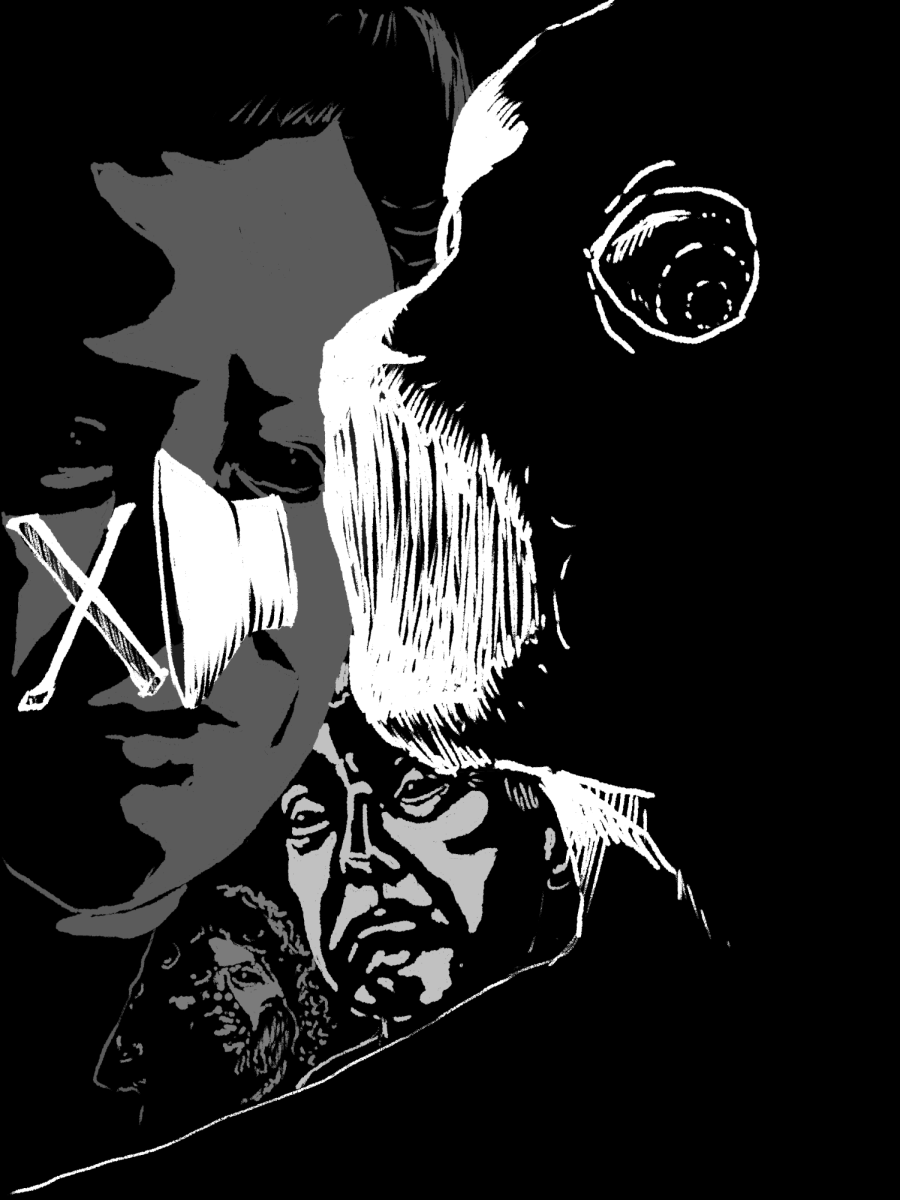Most Whitman students stay in Walla Walla for four years before leaving to pursue grad school or a career elsewhere. Students might hear about Whitman’s past or speculate about its future, but few of us get a chance to observe the college over the long haul. For people who have spent years working at Whitman, the changes over time are more visible. For this issue of The Circuit, we asked alumni, faculty, administrators and staff to reflect on the Whitman they know, and how it’s changed (or hasn’t) over time.
 Gillian Frew ’11, media relations officer
Gillian Frew ’11, media relations officer
It’s definitely a different experience being at Whitman as a student versus a staff member. It’s a different schedule, a different set of responsibilities, a different social circle. I don’t really go to student buildings anymore unless it’s for an assignment; I don’t know very many students and the interactions I have with professors are more colleague-client as opposed to student-teacher. There is a very cool alumni community in Walla Walla, though, which is something I didn’t realize as a student.
I think Whitman as an institution has always been really focused on the student experience, which makes sense given the fact that it’s a small liberal arts college. Everything we do as staff members goes toward enhancing that experience, or reflecting it to an external audience.
I also appreciate Walla Walla a lot more as a non-student. I feel more a part of the larger community as opposed to just the Whitman community, and I think I see the big picture more than I used to. I’ve definitely come to realize the cyclical nature of campus life, and how so many things stay the same year after year; it’s just the student body that’s constantly changing.
It’s kind of weird having conversations with my student interns about their classes, dorms, study abroad plans, etc., because it doesn’t feel like THAT long ago when that was all that consumed my life, too. Looking back, though, I think sometimes students just need to take a deep breath and realize that no matter how huge it may seem in the moment, their next big presentation or group project or test isn’t going to make or break the rest of their life. It’s really just about taking advantage of all the opportunities you have as a Whitman student, and enjoying it while it lasts!
 Jason Arp, ’94, Assistant Director of Alumni Relations
Jason Arp, ’94, Assistant Director of Alumni Relations
How do you measure a place? I was a student at Whitman in the early ’90s and came back to work here in 2003. Whitman has continued to change across all that time––the faculty has grown, the student body has grown, buildings have risen, the tuition has definitely risen and Whitman enjoys a place on the national stage of higher education that we never would have foreseen 20 years ago.
But is Whitman more different in the minds of students today than it was for students in the ’50s, ’60s, ’80s, etc? And how about for those alumni looking back at their time here fondly while at the same time seeing the school from the outside in? I speak with alumni all over the country. They tell me their stories and memories, but they always want to know if Whitman is the same place they love so much in their minds’ eye. For a long time I struggled with this question. Whitman is more prestigious than anytime in history. We have more programs, more opportunities to offer and a better sense of our direction as an institution of higher learning, but to me it hasn’t changed. I just couldn’t figure out a good way to articulate my thinking.
About a year ago I was having a conversation at The Green with someone I’ve considered a friend for over 20 years. He was also my thesis adviser and favorite professor. We were talking about how the faculty, the administration and the student body have all changed––mostly how all three have gotten bigger and what that means for “The Whitman Experience.” He asked me, “How big can the school get before Whitman stops being Whitman?” At that moment I knew the answer to both that question and the earlier one. The measure is IN the stories. Whether it’s class of 1964, 1994, 2012 or soon-to-be-alumni from the class of 2013, the stories always demonstrate the same things. It’s the professor that gives a little extra effort to make sure you passed a test, the staff member that went out of her way to make sure you got into the dorms a day early because you had nowhere else to go, and the president that invited you into his home. It’s the classes in the professors’ homes and the time spent as equals with faculty and staff working through issues on campus. These and other examples are the measure of Whitman College, the reason students love being here amongst the wheat fields and why alumni are still SO interested in this place decades later.
Since that conversation a year ago, I’ve had no problem articulating to alumni about how Whitman is exactly the same as when they were students. Some of the names on the buildings and doors have changed, we’re higher in the rankings than we were and the world Whitman exists in is drastically different, but the place and people and experience are still the same. To its alumni Whitman will never be better than during those four years they attended. We support this place with our energy and dollars because we know Whitman runs just like it did when we were here. We know how to measure this place.
 Megan Medica, ’81, Trustee
Megan Medica, ’81, Trustee
Many aspects and parts of Whitman College have changed and continue to evolve as time goes by, ranging from new buildings and renovations to curriculum and people. The general physical structure of both the campus and educational core has remained similar since I graduated in 1981. To me, the footprint of the college looks and feels remarkably the same now as it did in the early 1980s, albeit new and renovated buildings and an extensive outdoor sculpture collection. Even with the Reid Center replacing the SUB, the additions of Hunter and the ultra-cool Fouts Center, as well as the “new” (now not-so-new) science building and renovations to the library and HJT, I still feel right at home each and every visit.
The overall stability and strength of the liberal arts curriculum also continues to enjoy a long history which I only see as strengthening in its continuation: rigorous coursework, small class sizes, phenomenal professors. And while departments and course offerings have changed and evolved due to differing student interests and demands, it is as common today to be invited over to a professor’s home for dinner and for conversation to follow a grueling final exam just as it was when I was a student. Further, innovative and challenging programs (Semester in the West and international study abroad) continue to be an integral part of the Whitman experience. On the horizon, however, I see the next wave of important cornerstone programs, studies and events coming from our Student Engagement Center as more students desire to have external experiences mesh with their interests and studies in preparation for life after Whitman while still attending Whitman. The evolution of the college, and its future, is largely a reflection of the interaction between the people who run it and those who attend it … it is a unique combination and catalyst of people and events that when put together over time is what drives forward progress. The Whitman community is blessed to have had––and continues to attract––incredible students, faculty and staff.
 George Bridges, President
George Bridges, President
Whitman has a remarkable history of both continuity and change. Over the past decade our faculty and staff have exhibited the same continuity of commitment to offering an educational experience that is challenging, supportive and personal that faculty and staff have offered at Whitman for generations. Likewise, the campus culture remains friendly and welcoming just as President Stephen Penrose hoped it would be in 1934. Finally, the alumni today are as committed to supporting the school with their time, energy and treasure as they have for many decades. One of the most impressive features of Whitman alumni, regardless of their ages, is that their very best friends are often their former Whitman classmates. But like many colleges, Whitman has changed as the society has changed. Since 2000, the campus has become more racially and ethnically diverse. Faculty members are now active scholars in addition to being dedicated teachers. Advances in technology have dramatically changed how we acquire knowledge and the ways we connect with one another. New social media have transformed our interactions and the networks of which we are a part. Further, the contexts in which students learn and develop at Whitman are changing. Increasingly, experiences directly linked to the scholarly work of faculty or internships and service projects in communities supplement and enrich learning in our classrooms. There are more opportunities for our students to conduct research with faculty and to receive funding for internships than ever before. Finally, the appearance and facilities of the campus have changed in the last decade, with a number of renovations to academic buildings and campus facilities. The words that many alumni have shared at their reunions describe this pattern of continuity and change at Whitman quite well: “The campus looks very different now than it did when I was a student but it feels just the same––I am glad to be back.”
 Noah Leavitt, Assistant Dean for Student Engagement
Noah Leavitt, Assistant Dean for Student Engagement
Both students and alumni tell us that community service and engagement is a critical part of their Whitman experience and an essential component of their education.
Accordingly, the past 10 years have seen a dramatic increase in the way the college helps students participate in the world beyond campus in ways that help them develop their personal values, their professional skills and their engaged citizenship. During the past decade, the college has worked to support students who wanted to “make things happen” in Walla Walla by creating student-led volunteer programs that assist but not direct students’ off-campus involvements, and then helping them see how those involvements are both personally satisfying and professionally relevant.
The next 10 years will see greater emphasis on helping students understand what it means to be active, thoughtful citizens, leaders and community members. We plan to do this by creating more opportunities for off-campus engagement, in more powerful ways and with more entrepreneurial zeal. We will strengthen students’ interaction with alumni and friends of the college, to allow them to understand how their experiences in Walla Walla (and elsewhere, of course) are valuable professional development assets. Finally, we will expand students’ exposure to the social and economic opportunities that exist for them coming out of Whitman with the fantastic education they receive and the experiences they have here.
 Bob Carson, Professor of Geology and Environmental Studies since 1975
Bob Carson, Professor of Geology and Environmental Studies since 1975
I came here in ’75. I was used to being on campuses where there was a lot of activism by students; there had been Earth Day in 1970 and Vietnam War protests in 1970, so this place seemed kind of passive. I think it’s still relatively passive; I think the students are relatively passive environmentally, and relatively passive about divesting. I think a few students, sometimes with overlap, do most of the things … in terms of being socially active. That is, it’s probably the same students that are into divestment, into stopping the coal trains, and Whitman not using as much energy … all that kind of stuff. It’s a relatively small group.
In terms of communication skills, the writing is getting better––noticeably better. I don’t know why. The oral communication I was disappointed in when I first got here, and it’s gotten better and better, sincerely. I think one of the factors is PowerPoint. I think it has helped a lot of people who weren’t very good with overheads or weren’t very good without any props at all.
Sports have had some interesting changes. In ’77 we killed the football program and we put the funds into other sports. In ’75 women’s soccer was just getting started. We’ve started a lot of new club sports while I’ve been here: women’s lacrosse, men’s and women’s rugby … because students in general––or maybe only Whitman students in particular––are multi-talented to an extent which I can hardly believe. When I compare them with what I know––which is not that much––about other universities, those students are either athletes or musicians or they write for the school newspaper, or they study. I just think that so many Whitman students just do it all: that’s one of the reasons they’re coming to Whitman, and that’s one of the reasons they like it when they’re prospective students.
I think perhaps because of my age or maybe the level of my voice or something like that, as the years have gone by the students have this initial anxiety about taking a class from me. How much have the students changed? It’s probably obvious to most people that I didn’t retire at age 65. But I just love it. We often say to each other, at least in the geology department, that Whitman’s the best thing that ever happened to us. The students are so wonderful, our colleagues in general are so wonderful. Walla Walla’s a nice town. I get to go out of town at least once a week if not three times a week on field trips, so I don’t even know why they’re paying me. I have so much fun. I mean, you gotta eat, but really––I think you students are very lucky to be here, most of you, and I know that most of the faculty are very lucky to be here.
Ruth Wardwell, Assistant Vice President for Communications
Since coming to Whitman in 2005, I have seen change, evolution and consistency.
To me the most significant changes are physical, including the addition of the Baker Ferguson Fitness Center and the Fouts Center; the renovation of the Sherwood Athletics Center and the expansions of Maxey Hall and HJT. The physical changes are reflections of evolutions in the student experience and the academic program, which I believe have become even better versions of themselves. I see consistency in the devotion of staff to delivering on the college’s brand promise; the fulfillment by faculty of the teacher-scholar model, plus their mentorship and engagement of students; the beauty of the campus and how well that beauty is stewarded; the involvement and support of deeply invested donors and alumni; the energy, aptitude, achievements and goals of Whitman’s remarkable student body; and the efforts of the college as a whole to maintain focus on the liberal arts.
But there is another aspect to change at Whitman that is an outside force – all that has changed for our entire campus community and our external stakeholders because of mobile technology and social media.
As an example, when I first arrived, land line telephones were featured in residence hall rooms. I recall discussions that year and the next – “Do we still need them?” was the refrain.
I focus on mobile technology and social media because of how fundamental they have become to my profession and work on campus. Though the web has been around a long time, it evolved the communications field by making what I’ll call a comparatively minor hit on the Richter scale. The web provided a new vehicle for pushing messaging out and conducting business. And it helped begin to even the playing field for print media versus electronic media – previously print had one shot once a day, whereas TV and radio could report at any time. But the Richter scale comparison relates to the impacts of mobile devices and social media. Combined these have completely smashed what once was called “the news cycle,” and ours is truly a 24/7 world and a 24/7 campus – and not just the library!
Many but not all members of our internal and external audiences “live” in the mobile/social media frame, which means we have to develop multiple communication strategies and tactics to deliver any given news or messaging. A perfectly written email with an important message does no good if the recipient rarely checks email but never logs off Twitter or Facebook. And the age of the mobile device wielding citizen journalist means we have far more to listen to!
So for me, changes in how the Communications staff and I do our jobs; how we have to think about communication – sending messages and listening via multiple channels – are just as significant as new buildings going up.







